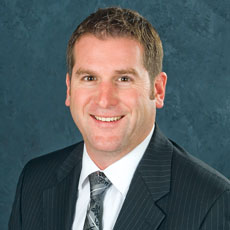
October has proven to be a big month for the Affordable Care Act (ACA) with the launch of the public exchanges and the political maneuverings in Washington. Although many in the healthcare industry welcomed the delay of ACA’s employer mandate, it’s important to understand how decisions your organization makes in 2014 will impact 2015.
In a few short months ACA’s individual mandate will go into effect. Many skilled nursing facility employees who waive or do not have access to benefits today will be evaluating their options. Here are a few things to consider if you do not offer coverage or have a high number of employees who waive coverage:
- Employees who do not have access to group coverage will be eligible to purchase health insurance on the public exchanges.
- There are no employer penalties in 2014 for not offering compliant coverage; however, penalties will begin on January 1, 2015.
- Waiting to offer compliant coverage could push employees unnecessarily into the exchanges.
- There is a $3,000 employer penalty in 2015 for every employee who receives a subsidy.
- It could prove challenging to pull employees out of the exchange in 2015.
There are several strategies business owners should consider for offering affordable coverage.
1. (MEC) Minimum Essential Coverage plans: MECs satisfy the individual mandate requirement and are designed to satisfy the affordability and essential benefit requirements in ACA. Premiums are very affordable, the benefit levels are flexible, and are designed to cover the everyday expenses incurred by individuals.
2. Defined Contribution: This financial strategy can be combined with a number of plan design options. Employers fix the dollar amount that they contribute toward an employee’s insurance plan. The amount is typically tiered, depending on the employee’s status (individual, spouse, etc…). Employees select insurance that best fit their needs, and if it is more expensive than the employer’s contribution, the employee pays the difference.
3. Self-Funding: More organizations are moving to a self-funded insurance model to escape ACA’s compressed 3:1 rating band, which is expected to impose significant rate increases on younger, healthier groups. Self-funded plans also avoid ACA’s new Health Insurance Tax. Since self-funded plans provide any surplus claims funds back to the employer, they also provide significant financial incentives for healthier groups.
4. Smarter Wellness: ACA creates new flexibility to provide greater incentives and rewards for wellness program participation. Coupled with better tools to identify health risks, quantify costs and deliver targeted programs to reduce risks, SNFs have more reason than ever to invest in wellness programs, particularly if they are self-funding.
The individual mandate requires all Americans to have health coverage by January 1, 2014 or be penalized. Employers who would have provided credible coverage in 2014 can wait a year to offer coverage without penalty this year; however, they should understand and evaluate the financial impact this will have in 2015 if employees select coverage through the public exchange. SNF owners should consider offering affordable coverage in 2014 to avoid the pitfalls in 2015.
Matthew Scott is the senior vice president of HDH Group and focuses on developing employee benefit programs that leverage alternative funding methods and long-term risk reduction through smarter wellness initiatives.



